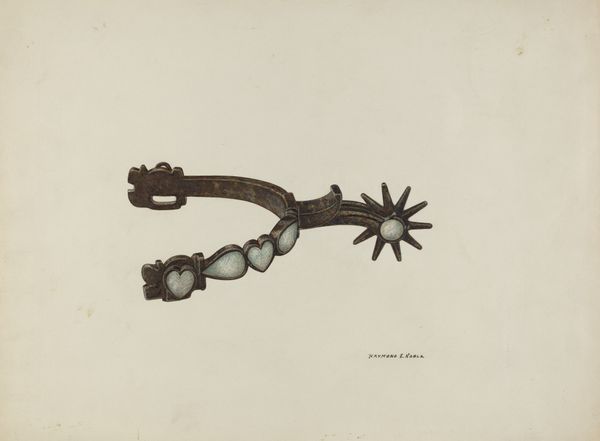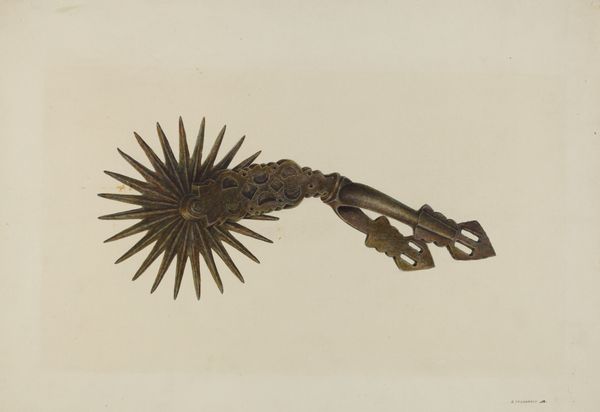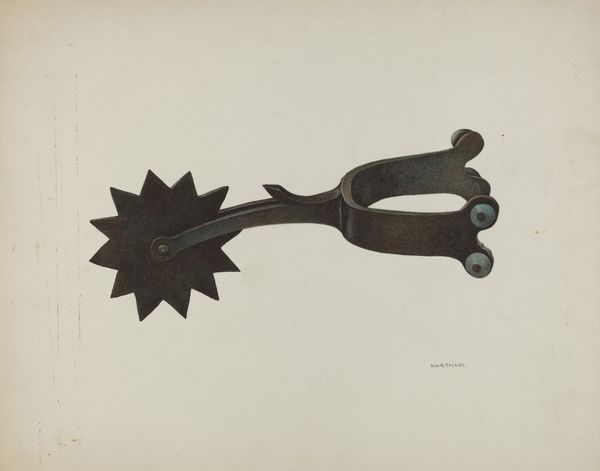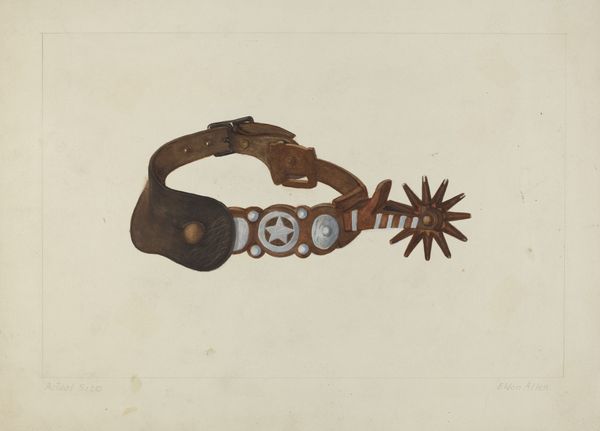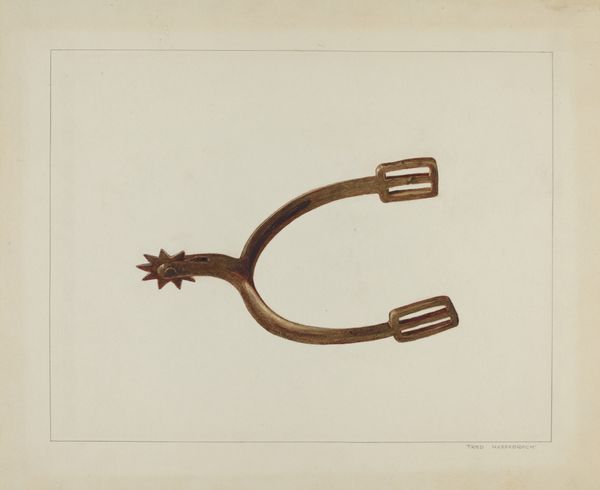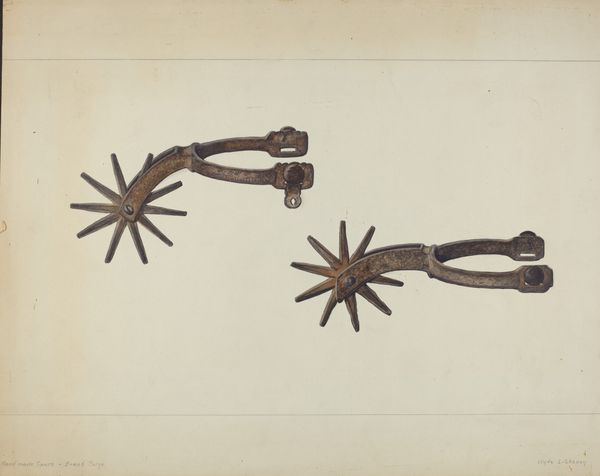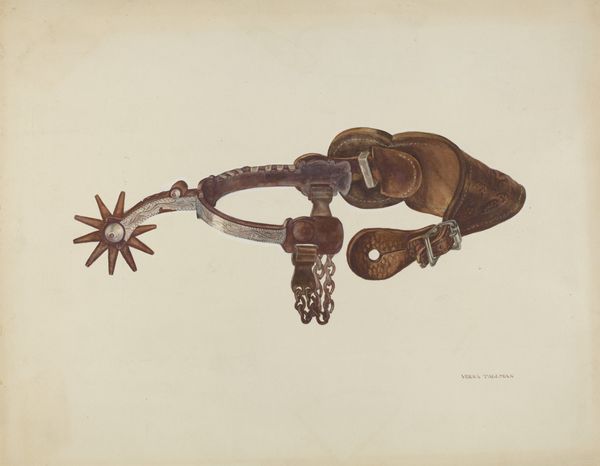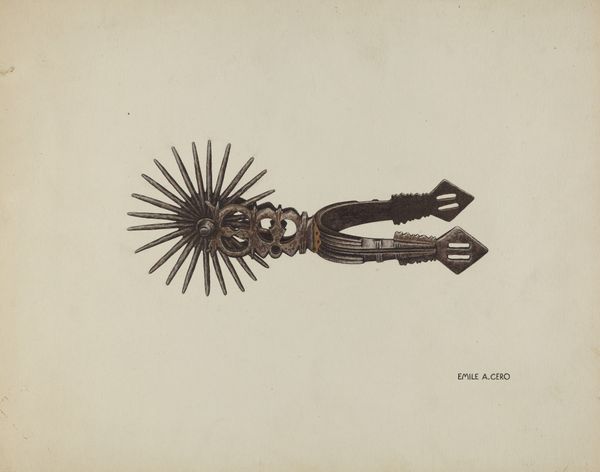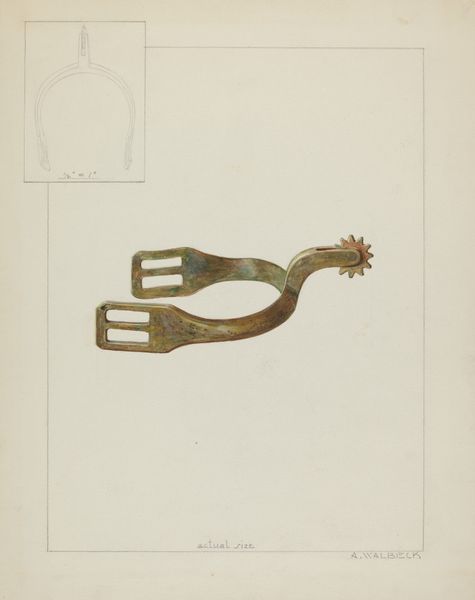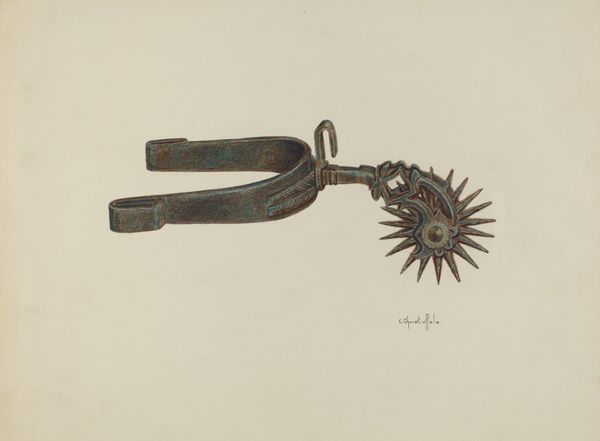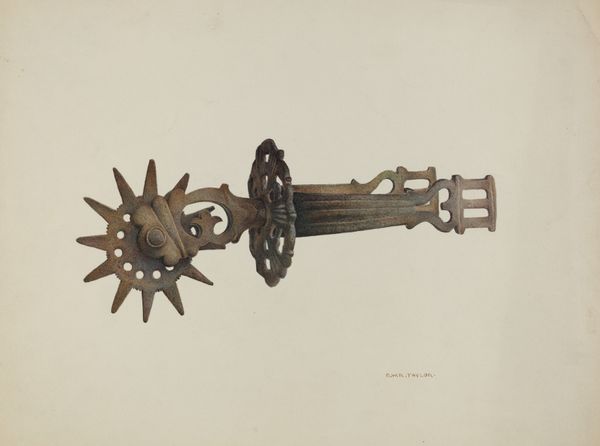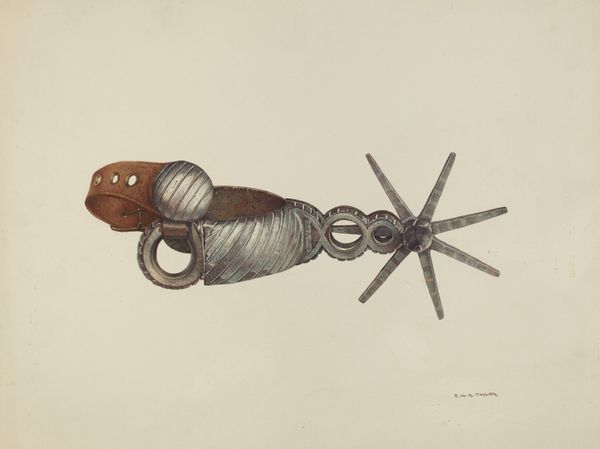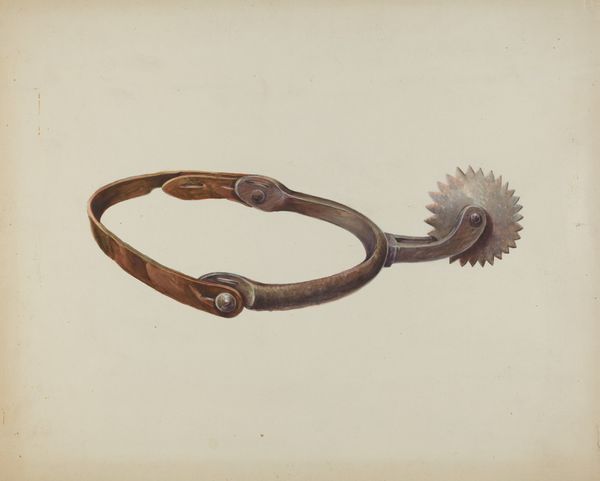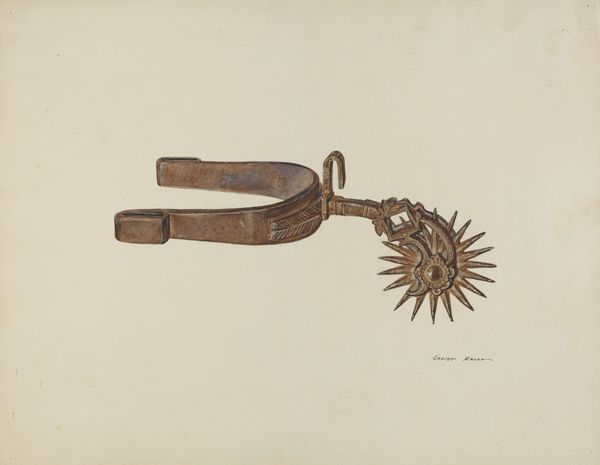
drawing, pencil
#
drawing
#
pencil drawing
#
pencil
#
watercolour illustration
#
realism
Dimensions: overall: 26.7 x 35.7 cm (10 1/2 x 14 1/16 in.)
Copyright: National Gallery of Art: CC0 1.0
Curator: Immediately, I'm struck by its simplicity. A spur depicted with such clarity... it feels almost iconic. Editor: Absolutely. The isolation of the spur against that off-white backdrop really emphasizes the object's... I don't know, utilitarian yet aggressive nature. There's a palpable tension there. Curator: Gerald Transpota created this drawing of a spur around 1940 using pencil. He was a member of the Works Progress Administration. During the WPA era, art aimed to create an accessible and patriotic depiction of everyday American life. Editor: The spur itself speaks volumes about that life, doesn't it? Think about the cultural narrative around westward expansion, and the symbolism embedded in the cowboy figure. A tool of control and domination... Curator: It is, in a way, a testament to the pervasive ideology that drove settlement. While often depicted in a romanticized light, these were often extremely violent eras. The American public had complex feelings about the mythology and how it squared with contemporary politics. Editor: The fine details really highlight the power dynamics present between humans, animals, and land at the time. Even rendered delicately in pencil, the drawing evokes themes of ownership, labour, and displacement. How fascinating that something so functional becomes loaded with this intense history. Curator: I think by rendering the object without figures and setting, the illustration leaves the story open for viewers to interpret and create dialogue about the meaning embedded in the spur. There is the beauty of the detail rendered here. Editor: Absolutely. The way light and shadow dance across the metal really brings out the textures and almost celebrates craftsmanship. Considering the realities, seeing the care invested in creating this spurs a recognition of complicated intersectional experiences, but it also provokes an interesting reflection on the artist's choices and point of view. Curator: This rendering prompts further contemplation of the era it was made in. This piece, seemingly simple at first, acts as an invitation for the viewers to understand that objects carry cultural histories and are open to interpretation. Editor: For sure. We are looking at history, identity, labour, and so much more embodied within the lines of this drawing.
Comments
No comments
Be the first to comment and join the conversation on the ultimate creative platform.
